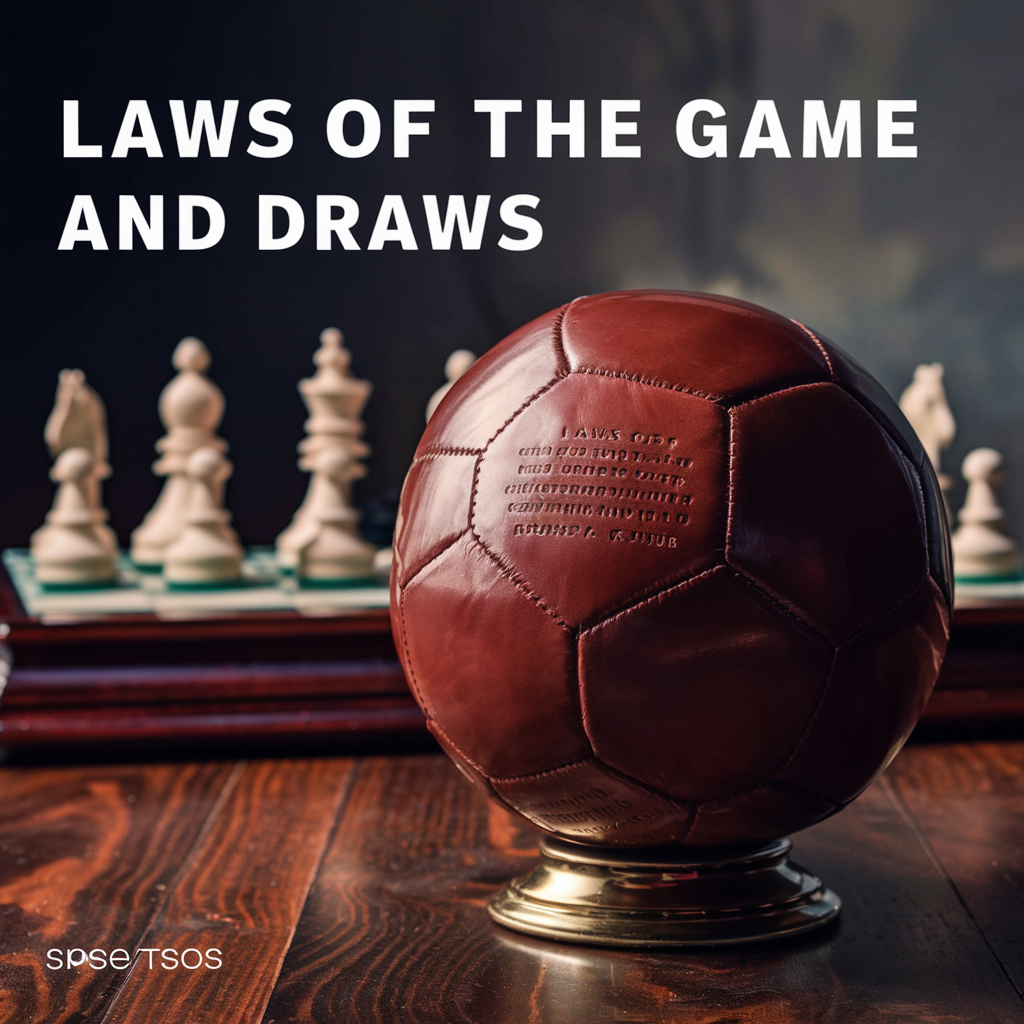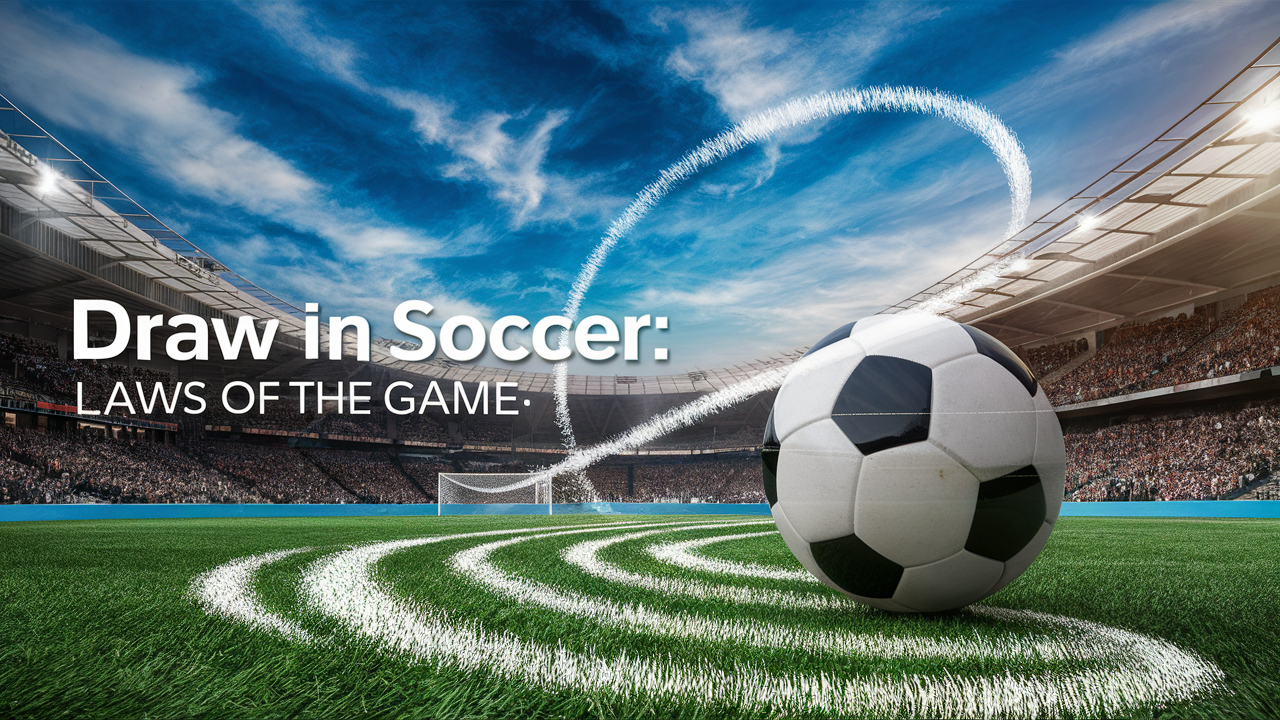In soccer, a draw occurs when a match ends with both teams scoring an equal number of goals, resulting in a tie. Understanding soccer draw rules and their implications is crucial for players, coaches, and fans alike, as it impacts league standings, tournament progress, and team strategy.
This article delves into the specifics of draws in soccer, covering the following aspects:
- Definition and Types of Draws: What constitutes a draw and different scenarios where draws occur.
- Laws of the Game: How FIFA’s rules address draws and tie-breaking procedures.
- Impact on Competitions: Effects of draws on domestic leagues, international tournaments, and cup competitions.
- Strategic and Psychological Effects: How draws influence team strategies and player morale.
By exploring these facets, we aim to provide a comprehensive guide on how draws are managed and their significance within the beautiful game of soccer.
This introduction sets up the scope of the article and incorporates the primary and secondary keywords naturally. Each section of the article will further elaborate on these points in 500-word segments.
Understanding the Draw
What Is a Draw?
In soccer, a draw (or tie) refers to a situation where both teams score an equal number of goals by the end of the match. Unlike a win or a loss, a draw results in no additional points for either team, which can impact league standings and tournament progression. This outcome is particularly significant in various competition formats, influencing both strategy and final results.
Types of Draws
- Regular Draw: This occurs in standard league matches where both teams end up with the same score. It’s the most common type of draw and results in each team earning a single point.
- Draws in Knockout Stages: In knockout competitions, a draw can have different implications. Matches that end in a draw may go into extra time or a penalty shootout to determine the winner, depending on the specific competition rules.
- Draws in Group Stages: In tournaments with group stages, a draw can affect how teams advance to the next round. Points are awarded for a draw, which can influence team rankings and qualification for knockout rounds.
Examples and Implications
- Domestic Leagues: A draw in a domestic league match results in both teams receiving one point, which affects their overall position in the league table.
- International Tournaments: Draws in international tournaments may impact qualification for knockout stages or group placements.
- Cup Competitions: Cup matches that end in a draw might lead to replay games, extra time, or penalty shootouts, depending on the competition’s rules.
Understanding the nuances of these types of draws is essential for grasping how they fit into the broader context of soccer competitions and strategies.
Laws of the Game and Draws

FIFA’s Laws of the Game Overview
FIFA’s Laws of the Game set the global standard for soccer rules, including how draws are handled. These laws ensure uniformity in the application of rules across different competitions and leagues. The laws cover various scenarios where a draw might occur and outline the procedures for handling them.
- Law 7: Duration of the Match: This law specifies the length of the game and what happens if the match ends in a draw, particularly in knockout stages.
- Law 9: The Ball In and Out of Play: Clarifies when a match might be stopped or restarted, which can influence whether a draw is recorded.
- Law 10: Determining the Outcome of a Match: Outlines how matches are decided, including the procedures if a draw occurs.
Rulebook Insights
- Match Rules: According to FIFA regulations, if a match ends in a draw during regular play, the result is recorded as such, and the game may proceed to extra time or penalties in certain competitions. The soccer draw rules for various formats are specified in the competition’s specific regulations.
- Points Allocation: In most leagues, a draw results in each team receiving one point. This allocation affects how teams are ranked and how their standings change over the course of the season.
- Tie-Breaking Procedures: For tournaments and leagues, if teams are tied on points, various tie-breaking procedures are applied. These can include goal difference, goals scored, or head-to-head results, depending on the competition rules.
By understanding these aspects of the Laws of the Game, players, coaches, and fans can better navigate the complexities of draws and their implications for match outcomes and competition standings.
Draws in Different Competitions
Domestic Leagues
In domestic leagues, a draw plays a crucial role in the overall points system. Teams earn one point for a draw, compared to three points for a win and zero points for a loss. This system impacts league standings, as consistent draws can keep teams competitive but may hinder their chances of topping the table.
- Points System: A draw awards one point to each team, which contributes to their total points and affects their position in the league table.
- Standings Impact: Teams that frequently draw matches may struggle to move up the table compared to those with more wins, making draws a double-edged sword.
International Tournaments
In international tournaments, draws can influence a team’s progression through the stages. The handling of draws varies depending on the competition format and stage.
- Group Stages: In group-stage competitions like the World Cup or UEFA Champions League, draws contribute to the overall standings within the group. Teams earn points for draws, which can affect their qualification for the knockout rounds.
- Knockout Stages: For knockout stages, a draw at the end of regular time often leads to extra time or a penalty shootout to determine the winner. This ensures that a clear winner is decided to advance to the next stage.
Cup Competitions
Cup competitions, such as domestic cup tournaments or international cups, have specific rules for handling draws.
- Replay Rules: Traditionally, if a cup match ends in a draw, the game may be replayed, especially in older formats. However, many modern cup competitions have shifted to extra time and penalties instead.
- Modern Procedures: Current regulations often stipulate that if a match ends in a draw after extra time, the outcome is determined by a penalty shootout. This method ensures a decisive result and maintains the competition’s schedule.
Understanding how draws are managed across different types of competitions helps in grasping their strategic and practical implications. The rules can vary, influencing how teams prepare and approach each match based on the competition format.
Impact of Draws on Teams and Players

Strategic Implications
A draw can significantly impact team strategy and game tactics. Teams may approach matches differently when a draw is a likely or acceptable outcome, affecting how they play and make decisions.
- Defensive vs. Offensive Strategy: Teams that are content with a draw may adopt a more defensive strategy to secure the point. Conversely, teams needing a win might take more risks and play aggressively.
- Game Management: In league formats, securing a draw might be strategically advantageous to maintain a position in the standings, particularly against stronger opponents.
Psychological Impact
The outcome of a draw can also have psychological effects on players and teams, influencing their performance and mindset in subsequent matches.
- Team Morale: A draw can be both positive and negative. It can be seen as a valuable point earned against a tough opponent or as a missed opportunity to gain a crucial win.
- Player Mindset: Players might feel frustrated or relieved depending on the context of the draw. Understanding these emotional responses is essential for maintaining focus and motivation in future games.
Case Studies
- Domestic Leagues: Teams in domestic leagues often experience the effects of frequent draws, which can lead to frustration or tactical adjustments. For instance, a team consistently drawing matches might need to reassess their approach to convert more games into wins.
- International Tournaments: In tournaments, a draw in a crucial match can affect a team’s advancement chances. For example, a draw in a group stage match might require teams to rely on other results or additional matches to secure progression.
Understanding the impact of draws on both strategic and psychological levels is vital for teams and players. It helps in crafting appropriate strategies and managing the emotional aspects of competitive play, ensuring better performance and resilience throughout the season.
Conclusion
In soccer, a draw is an integral aspect of the game that impacts team strategy, competition standings, and player morale. By understanding the soccer draw rules and how they influence various aspects of the game, players, coaches, and fans can better appreciate the role draws play in shaping the outcome of matches and competitions.
Summary of Key Points:
- Definition and Types of Draws: A draw occurs when teams end with equal scores, affecting regular matches, knockout stages, and group stages differently.
- Laws of the Game: FIFA’s rules provide a framework for handling draws, including points allocation and tie-breaking procedures.
- Impact on Competitions: Draws have varying effects on domestic leagues, international tournaments, and cup competitions, influencing standings and progression.
- Strategic and Psychological Effects: Draws can alter team strategies and impact player morale, influencing performance and future match preparations.
Final Thoughts: Grasping the nuances of how draws are managed and their implications is essential for navigating the complexities of soccer. Whether it’s understanding the strategic adjustments required or appreciating the broader impact on competition outcomes, knowledge of soccer draw rules enhances the overall experience of the game.
Call to Action: We encourage readers to reflect on their experiences with draws in soccer and share their insights. Engage further with soccer rules and strategies to deepen your understanding of the game and its intricate dynamics.

James Wilson is a dedicated soccer aficionado with a talent for crafting compelling narratives around the sport. Known for his ability to transform match analyses and player profiles into engaging stories, James brings the passion and drama of soccer to life on soccerworld.com.









